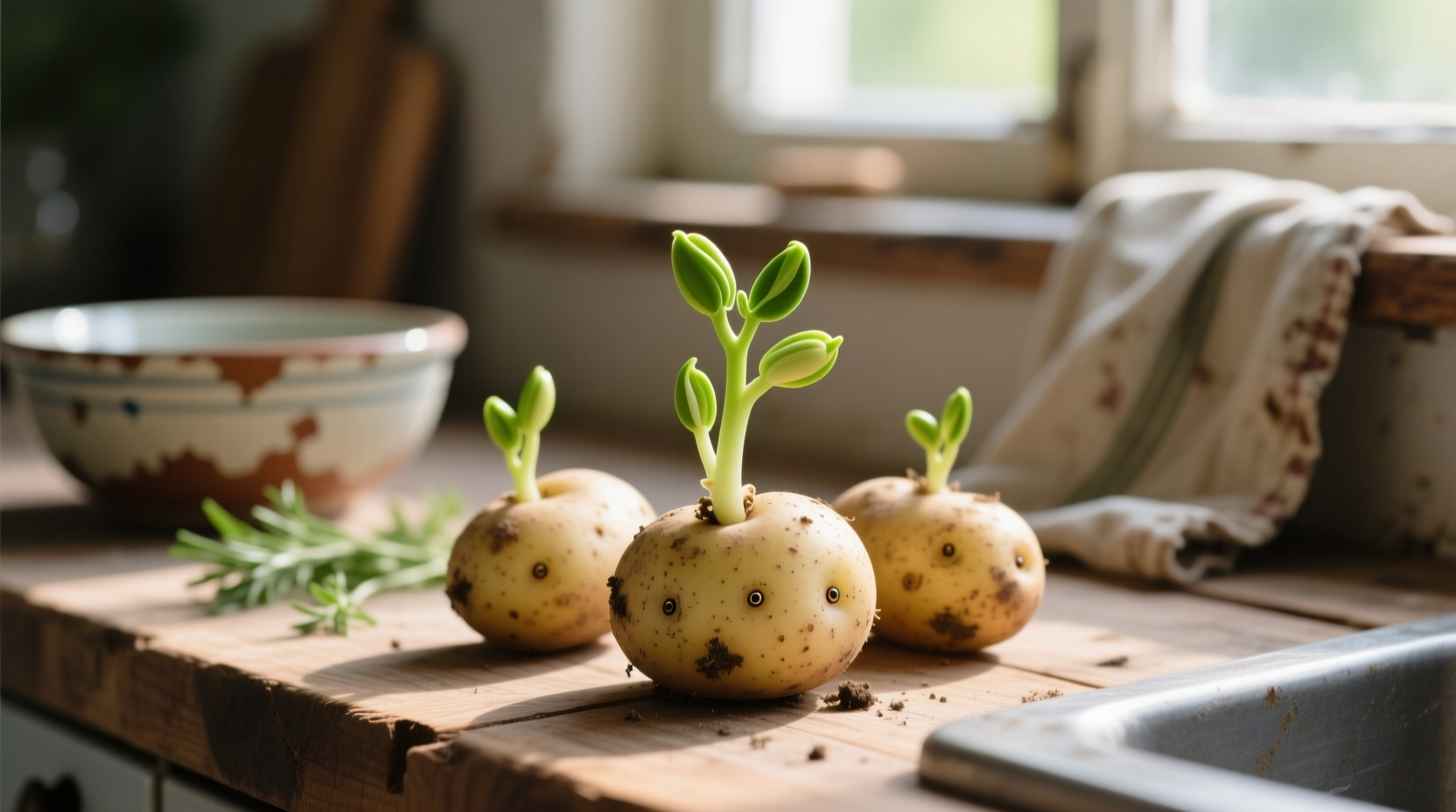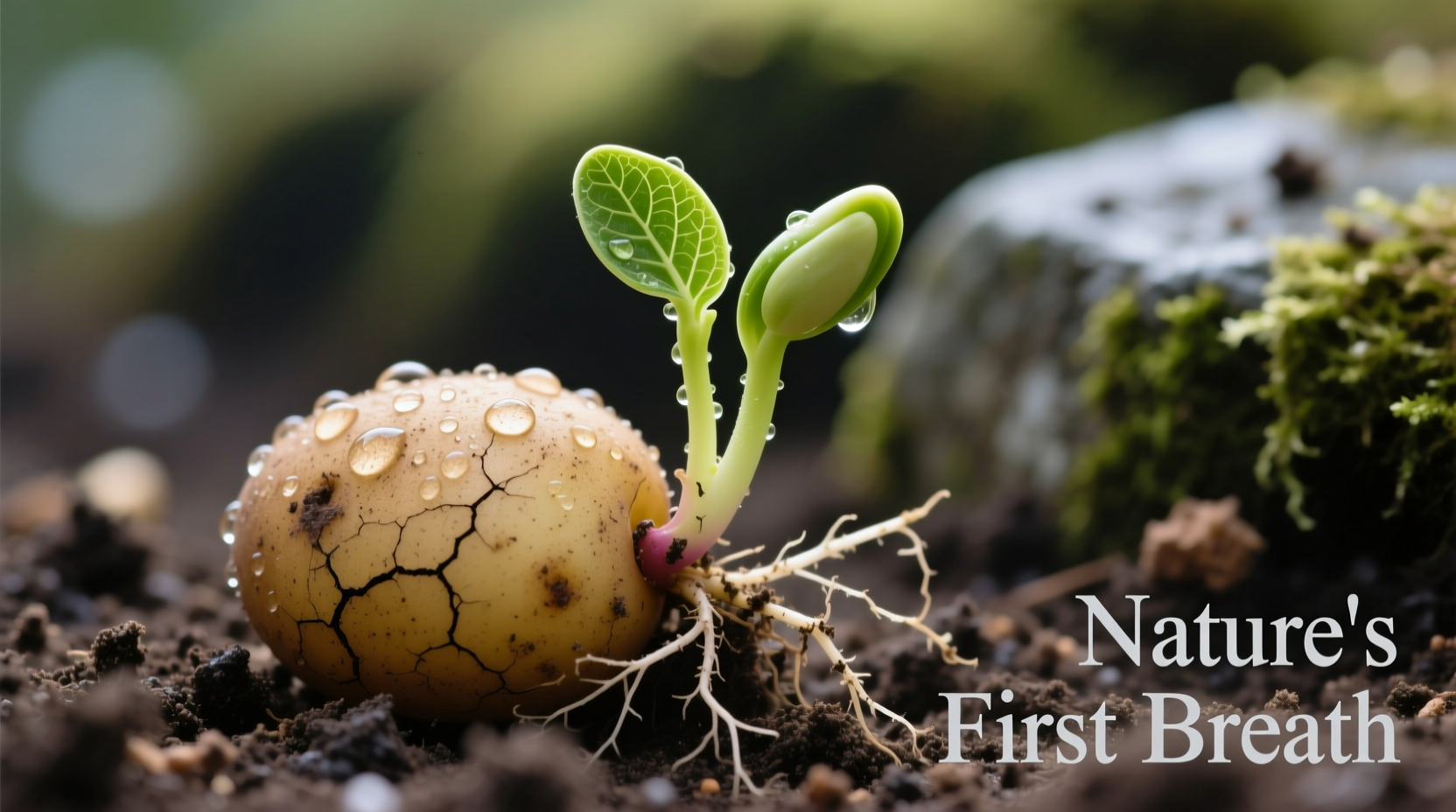Discover exactly when sprouted potatoes pose a risk and when they're perfectly safe to use in your cooking. This comprehensive guide provides science-backed information you can trust, helping you reduce food waste while keeping your family safe.
Understanding Potato Sprouting: The Natural Process
Potatoes sprout as part of their natural growth cycle when conditions are right. This dormancy-breaking process occurs when potatoes are exposed to warmth, light, and humidity. According to the USDA Agricultural Research Service, sprouting is the potato's biological mechanism to reproduce when stored improperly.
When you notice small sprouts emerging from the "eyes" of your potatoes, this indicates the tuber is converting its starches into sugars and proteins to fuel new growth. While this process changes the potato's texture and flavor slightly, it doesn't automatically make the potato unsafe to eat.

When Sprouted Potatoes Become Unsafe: The Solanine Factor
The primary concern with sprouted potatoes isn't the sprouts themselves, but the potential buildup of solanine—a naturally occurring glycoalkaloid toxin. Solanine concentrations increase significantly when potatoes are exposed to light, causing greening, and as they continue to sprout.
| Potato Condition | Solanine Level | Recommended Action |
|---|---|---|
| Firm with small sprouts, no greening | Low (safe) | Remove sprouts and eyes, use normally |
| Firm with moderate sprouts, slight greening | Moderate | Peel deeply, remove all green areas, use immediately |
| Soft, shriveled, or extensively green | High (dangerous) | Discard completely |
The FDA Food Safety Guidelines indicate that solanine levels above 20mg per 100g of potato can cause symptoms like nausea, headaches, and neurological problems in sensitive individuals. Green areas can contain up to 500mg per 100g—well above safe consumption levels.
Step-by-Step: Safely Preparing Sprouted Potatoes
When you've determined your sprouted potatoes are still safe to eat, follow this professional kitchen-tested method for preparation:
- Inspect thoroughly: Check for firmness and any green discoloration
- Remove sprouts completely: Use a paring knife to挖 out sprouts and the surrounding area
- Peel deeply: Remove at least 1/8 inch of potato around each eye
- Discard green portions: Cut away any green areas completely
- Cook properly: Boiling can reduce solanine levels by up to 40% according to Cornell University research
Potato Storage Guide: Preventing Sprouting
Proper storage dramatically extends potato shelf life. The University of Minnesota Extension Service recommends these evidence-based storage practices:
- Temperature: Store between 45-50°F (7-10°C)—never in the refrigerator
- Darkness: Complete darkness prevents greening and sprouting
- Ventilation: Use breathable containers like paper bags or wicker baskets
- Separation: Keep away from onions, which release gases that accelerate sprouting
- Humidity: Maintain 90-95% humidity to prevent shriveling
Context Boundaries: When This Advice Applies
Our recommendations apply specifically to common white, yellow, and red potato varieties. Sweet potatoes follow different rules—they're technically roots rather than tubers and don't produce solanine. If you're managing potatoes for commercial purposes or have specific health conditions like inflammatory bowel disease, consult a food safety specialist as individual circumstances may require different handling.
Alternative Uses for Sprouted Potatoes
Before discarding slightly sprouted potatoes, consider these practical alternatives:
- Plant them: Sprouted potatoes make excellent starters for home gardening
- Make potato water: Boil sprouted potatoes and use the water as a natural plant fertilizer
- Compost: If discarding, add to compost rather than throwing in regular trash
When to Definitely Discard Sprouted Potatoes
Don't risk food safety—immediately discard potatoes showing these warning signs:
- Extensive greening (more than 25% of surface)
- Soft, mushy texture or significant shriveling
- Bitter taste or burning sensation when tasted
- Strong, musty odor











 浙公网安备
33010002000092号
浙公网安备
33010002000092号 浙B2-20120091-4
浙B2-20120091-4